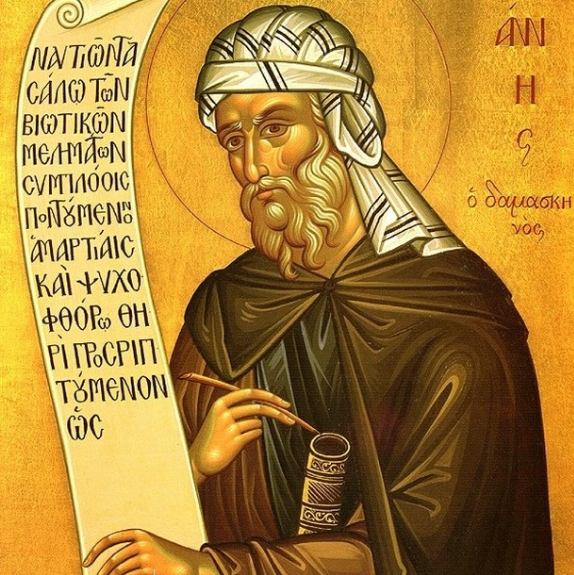
Today, December 4, is the memorial of Saint John Damascene.
Doctor of the Church.
Born in either c. 675 or 676 in Damascus, Umayyad Caliphate, John is known for defending the use of icons and images in churches through a series of letters opposing the anti-icon decrees of Germanus, Patriarch of Constantinople.
An account narrates that Germanus plotted against him, and forged a letter in which John betrayed the caliph. This caliph commanded that the writing hand of John should be chopped off as punishment. However, the Blessed Virgin appeared to John and re-attached the hand. This particular miracle made the caliph trust John again.
After this incident, John became a monk near Jerusalem. He became a priest and was condemned by the 754 Council of Constantinople over his defense of the use of icons. He was defended by the 787 Seventh Council of Nicea.
John authored “The Fountain of Wisdom,” the first real compendium of Christian theology, along with other works defending the orthodox faith, commentaries on Saint Paul the Apostle, poetry, and hymns. He was an excellent speaker known as Chrysorrhoas (“golden-stream”). He was the last of the Greek Fathers of the Church. He also adapted choral music for use in the liturgy.
He died of natural causes in 749.
Pope Leo XIII proclaimed St. John Damascene a Doctor of the Church in 1890.